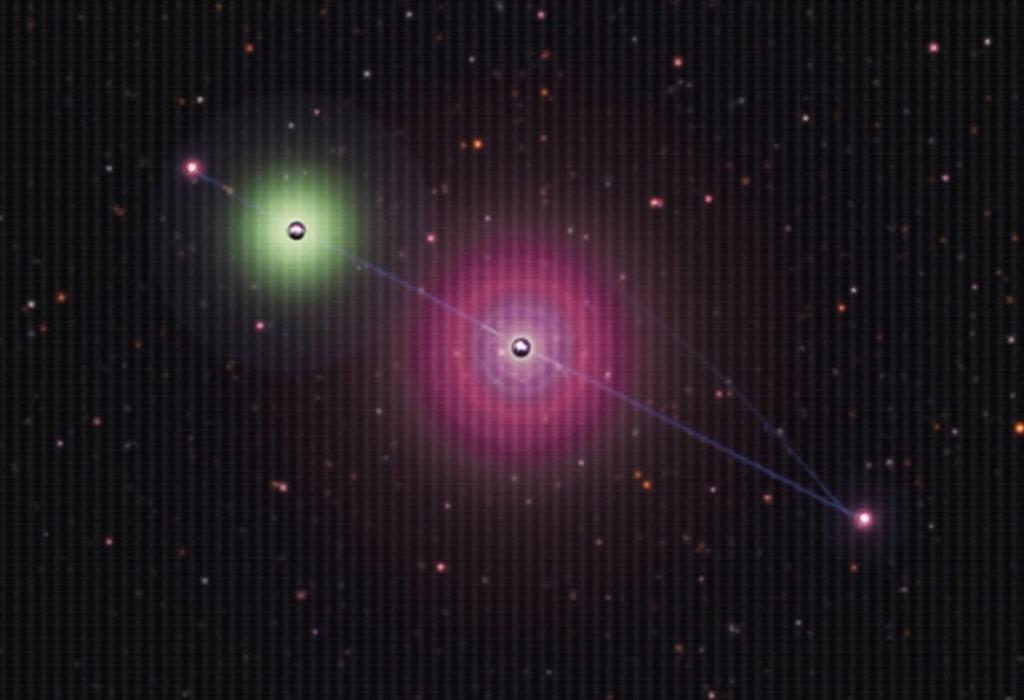In a groundbreaking study led by Nikku Madhusudhan at the University of Cambridge, the existence of alien life may be closer to being confirmed. The research, supported by data from NASA’s James Webb Space Telescope, indicates the presence of dimethyl sulfide (DMS) in the atmosphere of K2-18b, an exoplanet located 124 light years from Earth. DMS, a chemical compound predominantly found in the oceans of Earth, is produced almost exclusively by living organisms such as phytoplankton, making its detection a significant sign of potential life, or what scientists refer to as a 'biosignature'.
While the discovery has garnered significant attention, it is essential to highlight the history of such biosignature findings in the field of astrobiology, where expectation often clashes with reality. Previous claims, such as the detection of organic compounds on Mars and phosphine gas on Venus, have met with skepticism and inconclusive results. Planetary scientist Christopher Glein expressed a cautious view, saying that while the presence of DMS is intriguing, it is not definitive proof of life.
Astrobiology grapples with the challenge of defining life itself, a concept that continues to evade scientists and philosophers alike. Evidence is often ambiguous, and the properties that allow life to flourish on Earth may not be applicable or recognizable in alien environments. For instance, the hybrid nature of K2-18b—a 'Hycean' planet with a hydrogen-rich atmosphere and liquid water—complicates our understanding of what life could look like there.
Historically, notable studies such as the Miller-Urey experiment of the 1950s and Viking missions in the 1970s yielded more questions than answers, leaving researchers with a framework but little clarity. As expectations build around biosignatures like DMS, it is crucial to remember the long-standing tradition of disappointment due to misinterpretations of chemical signals or contamination of samples. Forces outside of biology, such as geology, are often capable of replicating conditions found in biological processes, adding another layer of confusion.
As characterized by various philosophers of science, including Carol Cleland, we face the challenge of describing 'life as we don't know it'. This perspective underscores how future discoveries might require redefining our approaches to identify organisms fundamentally different from anything on Earth. The K2-18b findings serve as a reminder of our knowledge limitations, urging scientists and theorists to collaborate more effectively. Philosophers suggest a broader definition of life that extends beyond mere chemical compositions—to possibly include organizational attributes that allow for self-sustenance and adaptive traits under diverse environmental conditions. As excitement surrounds the possibility of alien discoveries, one must remain grounded in the context of scientific inquiry: novelty and the unknown require an open mind as much as they demand rigorous evidence.
AD
AD
AD
AD
Bias Analysis
Bias Score:
30/100
Neutral
Biased
This news has been analyzed from 17 different sources.
Bias Assessment: The news article tends to remain balanced by recognizing both the excitement and skepticism surrounding the topic of extraterrestrial life. While the potential for life on K2-18b is highlighted, historical precedents caution against jumping to conclusions, which suggests a moderate bias in emphasizing both possibilities and uncertainties. While there is an inclination toward a hopeful narrative about alien life, the acknowledgment of scientific limitations and previous disappointments helps to counterbalance that optimism.
Key Questions About This Article




